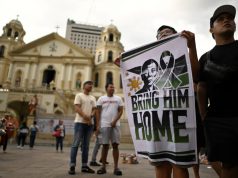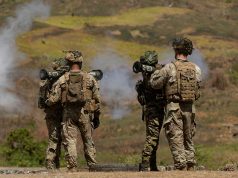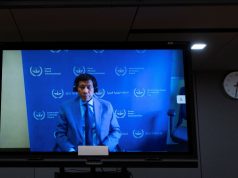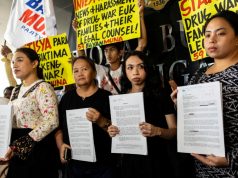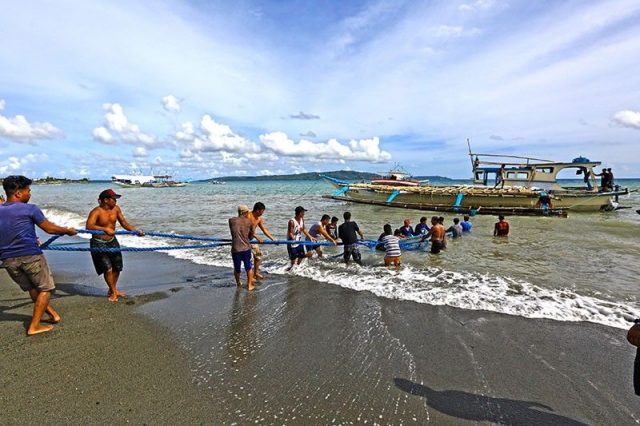
The Mutual Defense Treaty between the United States and the Philippines was floated as an option that could be invoked after a Chinese trawler crashed—possibly intentionally—onto a stationary boat manned by Filipino fishermen off Reed Bank in the South China Sea.
Sen. Panfilo Lacson and United States Ambassador to the Philippines Sung Kim brought up the 1952 security treaty while some administration officials exhibit diffidence over condemning the misdeed.
In remarks considered gentle for a characteristically foul-mouthed president, Rodrigo Duterte downplayed the collision that endangered the lives of 22 Filipino fishermen as commonplace “maritime accident.” Duterte is known for having taken a soft stance toward China despite its aggression in the West Philippine Sea.
Kim suggested in an interview that the treaty, which requires the United States to come to the Philippines’ aid, can be invoked should it be proven that the offending party in the incident was sanctioned by China’s government to attack the Filipino vessel.
“Any armed attack, I would think that would include government-sanctioned militias,” Kim said on One News’ “The Chiefs” on June 16, Sunday.
The ambassador said the US is open to review the Mutual Defense Treaty and commit to its obligations if necessary.
“(US Secretary of State Mike Pompeo) made clear that because the South China Sea is part of the Pacific, under the treaty itself, any armed attack on Filipino vessels, Filipino aircraft will trigger our obligations under the Mutual Defense Treaty.”
“I think that’s about as clear as you can get without getting into millions of possible hypothetical situations,” Kim said.
Lacson, meanwhile, expressed his disappointment over Duterte’s remark, noting that the president fails to look at other reasonable options explore options favorable to the Philippines.
In a tweet, Lacson suggested that the Mutual Defense Treaty be explored.
The president broke his silence and left us heartbroken. He forgot to explore all resources available before exercising his last option of surrender. The MDT is one yet untapped weapon. I am not suggesting WW3 but at least it can make China feel the balance of power in the WPS.
— PING LACSON (@iampinglacson) June 17, 2019
“The president broke his silence and left us heartbroken. He forgot to explore all resources available before exercising his last option of surrender,” Lacson tweeted on June 18.
“The MDT is one yet untapped weapon. I am not suggesting WW3 but at least it can make China feel the balance of power in the WPS,” he added.
While these were merely suggestions, presidential spokesman Salvador Panelo pointed out that it is still premature to say that the incident can trigger the 1951 treaty.
“We still do not know,” Panelo said.
Lasting defense alliance
The Mutual Defense Treaty was been signed by both the Philippines and the United States on Aug. 30, 1951.
It is a commitment of the two countries to defend each other in the event of an armed attack in the Pacific.
Article 5 of the treaty includes “an armed attack on the metropolitan territory of either of the Parties, or on the Island territories under its jurisdiction in the Pacific Ocean, its armed forces, public vessels or aircraft in the Pacific.”
Disappointment
Members of the shipwrecked crew of F/B GEM-VIR1 were disappointed with Duterte’s remark, which came after a week-long silence on the issue.
“Nalulungkot po ako dahil kasi parang balewala lang po ‘yung pagbangga sa amin, paano po kung maraming namatay sa amin?” boat captain Junel Insigne said.
Insigne insisted that the offending boat was definitely Chinese-flagged because of its “big superlights.”
The anchored Filipino boat also had its lights on that night as the crew slept near Reed Bank in the West Philippine Sea on June 9.
Having lost their boat, the Filipinos were rescued by a Vietnamese vessel after the Chinese trawler fled the scene.
Some officials and staunch supporters of Duterte cast doubt on the fishermen’s testimonies.




